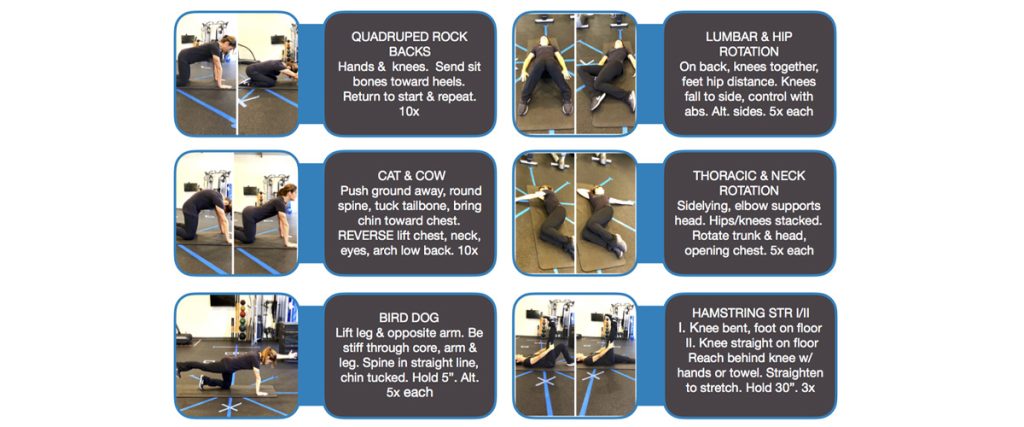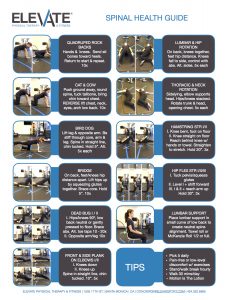Low back pain? You’re not alone. Low Back Pain (LBP) is common, costly, and debilitating. “Epidemic” is a word commonly used by experts. Lifetime prevalence of low back pain (LBP) is about 70%. LBP alone accounts for 2.5% to 3% of all physician visits annually in the United States. It is the most common reason to see a primary care provider in the US second only to the common cold.
Healthcare costs for LBP in the US were ~ $86 BILLION in 2005, a 65% increase from 1997 estimates, and they continue to rise. Yet despite increasing resources, recurrence is common (24% – 33% likelihood), and back pain numbers continue to grow, with chronic low back pain the fastest growing segment, estimated to be ~ 10% of cases. Costs from lost work productivity due to LBP in the United States exceed a staggering $7 billion dollars annually.
Money spent on lumbar fusions for low back pain in the US annually is roughly equal to what the US government spends on foreign aid annually — ~ $20 billion (compared to cancer research for prostate, breast and lung cancer combined, $1.9 billion). The United States had dramatic increasing trends in MRIs, opioid prescriptions, epidural steroids and fusions from 1994 – 2004, and yet, we do not see improved outcomes in chronic low back pain. 44 million medication prescriptions were written for LBP in 2000, of which hundreds of thousands of people experienced life-threatening adverse events and deaths. In one large study of over 2,000 patients with LBP, the most common initial treatments were opioids (~ 40%) and muscle relaxants (~40%).
Despite the noted increasing medical expenditures dedicated to its management with these interventions, the prevalence of chronic, disabling LBP continues to increase.
The majority of patients with LBP initially access healthcare through a primary care provider. Given the volume of patients with LBP managed in primary care, decisions in this setting have substantial implications for process of care and overall healthcare cost. Research shows that there are wide variations in primary care practice for decisions such as prescribing medication, ordering imaging, and referral to specialists.
Physical Therapy Clinical Practice Guidelines that synthesize the latest clinical research for LBP recommend an active approach to physical therapy care with the focus on exercise interventions and other strategies to help patients maintain and improve their overall activity levels. Despite this recommended approach and the fact that various interventions within the scope of practice of physical therapists (eg, exercise, spinal manipulation / manual therapy, education) are recommended as effective, unfortunately, many physicians mostly recommend delaying referral to physical therapists for at least 4 weeks following initial primary care consultation. This “wait and see” approach is based on the belief that most patients with LBP will recover rapidly, and intervening quickly would not be cost-effective. However, more and more, the evidence is indicating that this belief and approach to managing LBP is failing patients and burdening the healthcare system.
Despite current medical management guidelines to the contrary, the current approach has yielded high rates of initial use of imaging, nonsteroidal anti-inflammatory drugs, and opioid medications in the initial management of patients with LBP. There is not evidence that clinical outcomes are improving with these interventions; in fact, rates of chronicity related to an episode of LBP are increasing. A majority of “wait and see” patients go on to experience persistent and/or recurrent symptoms, and up to one-third report moderate to severe pain 1 year following the initial primary care encounter.
Contrary to current medical practice guidelines, early use of imaging and opioids are common, as referenced above, and are associated with higher rates of prolonged disability, invasive procedures (injections and surgery), greater cost and poor quality of life.
What’s the missing link to successful recovery from LBP? Evidence points more and more to Physical Therapy-guided active recovery. We see improved outcomes, lower costs and reduced risk of invasive procedures like injections and surgery when compared to delaying care, opioids, and early imaging. Yet primary care referral rates were as low as 7% in a very large study of 32,000 people with low back pain.
In a study across more than 400,000 low back pain patients, the evidence showed:
Significant DECREASE in likelihood of surgery when people receive PT in the acute (1 – 30 days) and sub acute phase (31 – 90 days)
Significant DECREASE in risk for injections in those who received PT in acute or subacute phase vs. chronic (91 – 365 days)
Significant DECREASE in frequent (11 or more) office visits for LBP who received PT in acute or subacute phase
Overall, patients who received PT within the first 30 days had fewer episodes of doctor visits, epidural injections, and surgeries in the year compared to those who received PT after 90 days (chronic phase).
And yet… Mean time to initiate PT in this very large study was 86 days.
Physical therapy evidence-based interventions, and clinical reasoning to match the right patient to the right treatment at the right time by a physical therapist earlier in the course of care, can prove more cost-effective by promoting recovery and reducing the need for more invasive and costly interventions.
The good news is, this trend is improving as the research becomes clearer and is broadly shared across the medical system, and evidence-based guidelines are more and more integrated into medical practices. So we’re headed in the right direction for best practices.
At Elevate, we treat people experiencing low back pain A LOT, and in our model of 1:1 care with our highly experienced Doctor of Physical Therapy and our Evidence-Based Approach, we have great success. If you’re having back pain, don’t delay any longer. The sooner you receive proper care, the better. And don’t despair if your pain is longer standing. We also treat many people coping with chronic low back pain very successfully as well.
No physician referral or prescription is necessary. California is a Direct Access state allowing you to go directly to Physical Therapy in order to speed your access to licensed musculoskeletal experts. A Physical Therapist will determine, through thorough screening and evaluation, if Physical Therapy is the correct path for your pain, or if a physician visit is recommended first, or concurrently with PT.
Elevate Spinal Health Guide: This is a great tool for general spinal, pelvis and hip mobility and strengthening.
You can also check us out in action on Instagram and Facebook @elevateptfit where our PT team members demonstrate manual therapy and exercise interventions for Low Back Pain.
____________________________________
References:
Delitto, Anthony & George, Steven & van Dillen, Linda & Whitman, Julie & Sowa, Gwendolyn & Shekelle, Paul & Denninger, Thomas & Godges, Joseph. (2012). Low back pain. The Journal of orthopaedic and sports physical therapy. 42. A1-57. 10.2519/jospt.2012.42.4.A1.
Flynn, Timothy & Smith, Britt & Chou, Roger. (2011). Appropriate Use of Diagnostic Imaging in Low Back Pain: A Reminder That Unnecessary Imaging May Do as Much Harm as Good. The Journal of orthopaedic and sports physical therapy. 41. 838-46. 10.2519/jospt.2011.3618.
Childs et al. Low Back Pain: Do the Right Thing and Do It Now. JOSPT. 2012;42:296-299.
Mirza, Sohail & Deyo, Richard & Heagerty, Patrick & Turner, Judith & Martin, Brook & Comstock, Bryan. (2013). One-year Outcomes of Surgical versus Non-surgical Treatments for Discogenic Back Pain: A Community-based Prospective Cohort Study. The spine journal : official journal of the North American Spine Society. 13. 10.1016/j.spinee.2013.05.047.
Childs, J.D., Fritz, J.M., Wu, S.S. et al. Implications of early and guideline adherent physical therapy for low back pain on utilization and costs. BMC Health Serv Res 15, 150 (2015) doi:10.1186/s12913-015-0830-3
Gellhorn, Alfred & Chan, Leighton & Martin, Brook & Friedly, Janna. (2010). Management Patterns in Acute Low Back Pain The Role of Physical Therapy. Spine. 37. 775-82. 10.1097/BRS.0b013e3181d79a09.
Fritz, Julie & Childs, John & Wainner, Robert & Flynn, Timothy. (2012). Primary Care Referral of Patients With Low Back Pain to Physical Therapy. Spine. 37. 10.1097/BRS.0b013e31825d32f5.


